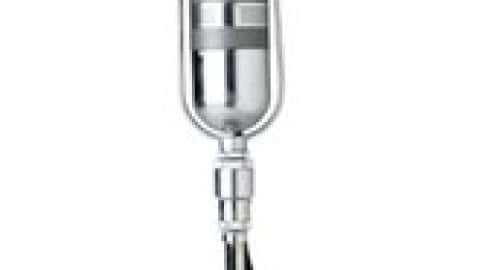No matter what you do – but especially if you’re something like a self-employed creative – staying organized is key to streamlining the administrative aspects of what you do so you can focus your time and energy on the core creative work. One great tool for staying organized is a checklist.
What is this checklist for?
Checklists are best used as a tool to make sure critical steps in a process are not missed – distinct sets of actions that need to be done with precision each and every time. Just as an example, here is a checklist from the medical field prior to starting surgery:
- Make sure you have consent to perform the procedure
- Check which side of the body the surgery is being performed on
- Verify the anesthetist’s preparations are complete
- Know if your patient has any known allergies
- Be prepared for the unexpected, like major blood loss
These all seem simple and obvious, but miss any one of them, and there are dire consequences.
Now if you’re a voice-over artist with a home studio preparing for a remote recording session, you could prepare a similar list:
- Make sure you’ve got a strong, stable internet connection
- Check to make sure you’ve got the correct scripts
- Verify your DAW is up and running
- Know how to pronounce any tricky words or names in the script
- Be prepared for the unexpected, like the mailman stopping by and stirring up your lovely (but VERY vocal) lab-hound mix and ruining your take
Okay admittedly, you’re on your own with that last one. But you get the idea: simple things that may seem obvious but, if missed, can be devastating.
What kinds of checklists are there?
Both of the above are what’s called “Do-Confirm” checklists: processes you do from memory, but use to confirm every step is actually completed. Other examples could be: checking the recording settings in your DAW before recording, making sure you’ve done all the necessary steps to invoice a client, or even a list of the warm up exercises you do before each session.
There is another type of list called a “Read-Do” list where, you guessed it, you read instructions before you do them. These are best used when the order of operations is more critical, and/or the list user has less expertise on the subject. If you’ve ever cooked something from a recipe book, you were following a Read-Do list. In your VO business, imagine tasks like preparing your taxes, or writing up instructions for an editor or copywriter you partner with.
How can I make my checklists more effective?
There are a couple simple rules for making good checklists.
- Set clear and concise goals.
- Keep it short. Research shows 5-9 items is ideal.
- Use simple language and basic layouts.
- Make sure it all fits on one page/screen/post-it/etc.
- Actually use your list, see if it works, and tweak it if it could be better.
If you need to do more than 5-9 things to prepare for something, break it out into sublists that all have distinct goals. From my example above, for the list item “Verify your DAW is up and running” you might break that out into another sublist that has items like:
- Open Audacity
- Check to make sure there is a clean, new file open
- Check to make sure the correct input is selected
…and so on. The key is to keep each list directed at a specific outcome, and have each individual list be easily digestible.
A note on tools…
People get really hung up on the latest apps and whatnot, but it is far more important to have effective lists with clear goals than it is to make sure your list is running on the shiniest new software. That said, I will give two recommendations I use personally, and even give you a peek into how I use them.
This is a great app for recurring daily and weekly lists, as well as for goal tracking. I use it every day to execute my morning routine, in the afternoons to make sure I’m drinking water, and at night to make sure I’ve done all I need to go to bed. I also use its weekly goal feature to set a target for a certain number of pages read of my book.
Below is a snapshot of my nighttime list:
As you can see, it’s clear and concise (I want to go to bed), it’s 5 items long, it’s got simple language and a clean layout (thanks, Productive!), it all fits on the screen, and I have iterated it many times. The app also has the bonus feature of giving you stats on how consistently you checked things off (I swear I brushed my teeth last night, I just forgot to check it off!)
The notes app is great for a lot of things, but one of its lesser-used features is the checklist style option. It’s a simple tool that allows you to make lists into checkable and uncheckable items. Below is a note with two lists I use each day and week to make sure I feed, walk, and otherwise care for my dog:
Again: clear goals, short lists, simple format, one screen, and it’s been used and changed a bunch.
If you’re wondering, “Gee, this all sounds an awful lot like a summary of surgeon-turned-best-selling-author Atul Gawande’s 2009 book, The Checklist Manifesto”, you’re onto something. If you want to dive deeper on the subject, and hear some fascinating stories from the world of medicine, I highly suggest picking up a copy of that book.
Happy listing!
Check out our free PDF with pro-tips from real working voice-over actors here!
Want to learn more about voiceover? Signup for our introductory VO webinar.








